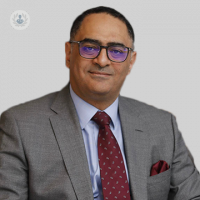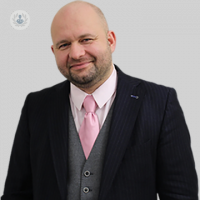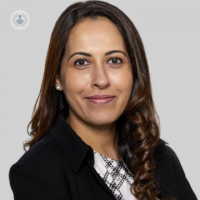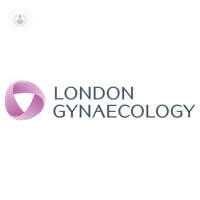What is a myomectomy?
A myomectomy is a surgical procedure performed to remove uterine fibroids, which are common non-cancerous growths that appear in the womb. Your gynaecologist might recommend shrinking the fibroids if they are causing persistent symptoms, such as heavy bleeding and pain.
In some women, however, uterine fibroids are asymptomatic and treatment isn’t necessary. A myomectomy is an alternative to a hysterectomy (the surgical removal of the uterus) if a woman would still like to get pregnant and have children.

How do I know if a myomectomy is right for me?
The procedure isn’t suitable for all types of fibroid. The specialist will determine whether you are eligible for a myomectomy by taking the size, number and position of your fibroids into consideration.
How is myomectomy performed?
There are three possible ways for myomectomy to be performed:
1. Abdominal (laparotomy)
This traditional open surgery method is used if the fibroids are really large, there are a lot of them, or they are deep inside the uterine wall. Under general anaesthesia, the gynaecologist will make a cut in the lower abdomen to remove them. The uterine muscle will then be sewn back together. If you intend to get pregnant in the future, the doctor might recommend a C-section, which lowers the risk of your uterus opening when you are in labour.
2. Hysteroscopic
This operation is performed if the fibroids are inside the uterus. A surgical tool called a hysteroscope, which is like a telescope, enables the doctor to see the fibroids. If it has a wire loop fitted, it’s called a resectoscope that enables the surgeon to remove the fibroids with high-frequency electrical current to cut them loose.
3. Laparoscopic
The surgeon makes small cuts, which enables their small specialised tools to remove the fibroids. The minimally-invasive procedure eliminates the need for traditional open surgery.
Can uterine fibroids grow back after surgery?
A myomectomy is an effective treatment for fibroid removal, however, there is a chance that they will grow back in the future and further surgery will be needed.
04-16-2020 08-21-2023Myomectomy
Miss Neelam Potdar - Obstetrics & gynaecology
Created on: 04-16-2020
Updated on: 08-21-2023
Edited by: Conor Lynch
What is a myomectomy?
A myomectomy is a surgical procedure performed to remove uterine fibroids, which are common non-cancerous growths that appear in the womb. Your gynaecologist might recommend shrinking the fibroids if they are causing persistent symptoms, such as heavy bleeding and pain.
In some women, however, uterine fibroids are asymptomatic and treatment isn’t necessary. A myomectomy is an alternative to a hysterectomy (the surgical removal of the uterus) if a woman would still like to get pregnant and have children.

How do I know if a myomectomy is right for me?
The procedure isn’t suitable for all types of fibroid. The specialist will determine whether you are eligible for a myomectomy by taking the size, number and position of your fibroids into consideration.
How is myomectomy performed?
There are three possible ways for myomectomy to be performed:
1. Abdominal (laparotomy)
This traditional open surgery method is used if the fibroids are really large, there are a lot of them, or they are deep inside the uterine wall. Under general anaesthesia, the gynaecologist will make a cut in the lower abdomen to remove them. The uterine muscle will then be sewn back together. If you intend to get pregnant in the future, the doctor might recommend a C-section, which lowers the risk of your uterus opening when you are in labour.
2. Hysteroscopic
This operation is performed if the fibroids are inside the uterus. A surgical tool called a hysteroscope, which is like a telescope, enables the doctor to see the fibroids. If it has a wire loop fitted, it’s called a resectoscope that enables the surgeon to remove the fibroids with high-frequency electrical current to cut them loose.
3. Laparoscopic
The surgeon makes small cuts, which enables their small specialised tools to remove the fibroids. The minimally-invasive procedure eliminates the need for traditional open surgery.
Can uterine fibroids grow back after surgery?
A myomectomy is an effective treatment for fibroid removal, however, there is a chance that they will grow back in the future and further surgery will be needed.


All you need to know about myomectomy, straight from a specialist
By Mr Glefy Furtado
2024-11-21
Myomectomy is a surgical procedure designed to remove uterine fibroids, which are benign growths that can cause a variety of symptoms and complications. Here, Mr Glefy Furtado, renowned consultant obstetrician, gynaecologist and urogynaecologist, provides an expert insight into the procedure, its benefits, and what to expect before, during, and after surgery. See more
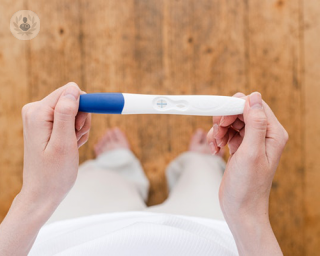

Do uterine polyps affect fertility?
By Mr Mahantesh Karoshi
2024-11-21
Uterine polyps are growths which can develop on the lining of the womb. They can cause pain and heavy menstrual bleeding and in some cases, they can also affect fertility. In this article, leading women’s health expert and consultant gynaecologist Mr Mahantesh Karoshi gives expert insight on this type of growth and when it should be removed. He also explains how polyps can cause fertility problems. See more


Fibroids: What are my (surgical and non-surgical) treatment options?
By Mr Michael Magro
2024-11-20
Fibroids are benign (non-cancerous) growths, made of muscle and fibrous tissue, that develop in or outside the womb (uterus). Here to provide an expert insight into fibroids, including symptoms and surgical and non-surgical treatment options, is Mr Michael Magro, renowned consultant gynaecologist. See more


Radiofrequency ablation (Sonata): The fibroid treatment option for women desiring a uterine-sparing option and future fertility
By Mr Mahantesh Karoshi
2024-11-20
Revered women’s health expert and consultant gynaecologist Mr Mahantesh Karoshi details treatment options for uterine fibroids, shining a light on Sonata, a type of radiofrequency ablation that allows women to preserve their fertility for the future. See more
Experts in Myomectomy
-
Mr Mohamed Mabrouk
Obstetrics & gynaecologyExpert in:
- Endometriosis
- Myomectomy
- Fibroids
- Hysterectomy
- Menstrual disorders
- Adenomyosis
-
Mr Gidon Lieberman
Obstetrics & gynaecologyExpert in:
- Early menopause
- Fibroids
- Menopause
- Myomectomy
- Postmenopausal bleeding
- Infertility
-
Mr Sourav Das
Obstetrics & gynaecologyExpert in:
- Fibroids
- Hysterectomy
- Laparoscopic hysterectomy
- Myomectomy
- Ovarian cyst
- Postmenopausal bleeding
-
Mr Denis Tsepov
Obstetrics & gynaecologyExpert in:
- Endometriosis
- Robotic surgery
- Hysterectomy
- Myomectomy
- Menopause
- Fertility test
-
Ms Sangeeta Khinder
Obstetrics & gynaecologyExpert in:
- Colposcopy
- Fibroids
- Heavy periods
- Hysterectomy
- Minimal access surgery (keyhole surgery)
- Myomectomy
- See all

The Princess Grace Hospital - part of HCA Healthcare
The Princess Grace Hospital - part of HCA Healthcare
The Princess Grace Hospital, 42-52 Nottingham Pl, W1U 5NY
No existe teléfono en el centro.
By using the telephone number provided by TOP DOCTORS, you automatically agree to let us use your phone number for statistical and commercial purposes. For further information, read our Privacy Policy
Top Doctors

London Gynaecology- The City of London
London Gynaecology- The City of London
15 Austin Friars, London EC2N 2HE, United Kingdom
No existe teléfono en el centro.
By using the telephone number provided by TOP DOCTORS, you automatically agree to let us use your phone number for statistical and commercial purposes. For further information, read our Privacy Policy
Top Doctors

The Harley Street Clinic - part of HCA Healthcare
The Harley Street Clinic - part of HCA Healthcare
35 Weymouth Street, London. W1G 8BJ
No existe teléfono en el centro.
By using the telephone number provided by TOP DOCTORS, you automatically agree to let us use your phone number for statistical and commercial purposes. For further information, read our Privacy Policy
Top Doctors
-
The Princess Grace Hospital - part of HCA Healthcare
The Princess Grace Hospital, 42-52 Nottingham Pl, W1U 5NY, Central LondonExpert in:
- Cancer
- General Surgery
- Orthopaedic surgery
- Robotic Surgery
- Intensive care
- Sports Medicine
-
London Gynaecology- The City of London
15 Austin Friars, London EC2N 2HE, United Kingdom, Central LondonExpert in:
- Miscarriage
- Cancer screening clinic
- Ultrasound
- Pregnancy
- Endometriosis
- Fibroids
-
The Harley Street Clinic - part of HCA Healthcare
35 Weymouth Street, London. W1G 8BJ, Central LondonExpert in:
- Cancer
- Head and neck cancer
- Cardiology
- Intensive care
- Diagnostic Imaging
- Women’s health
- See all
- Most viewed diseases, medical tests, and treatments
- Menopause support
- Pelvic ultrasound
- Complex endometriosis
- Maternal mental health
- Weight loss injections
- Nipple discharge
- Abdominal pain
- Endovenous laser treatment (EVLA)
- Minimal access surgery (keyhole surgery)
- Head and neck cancer

